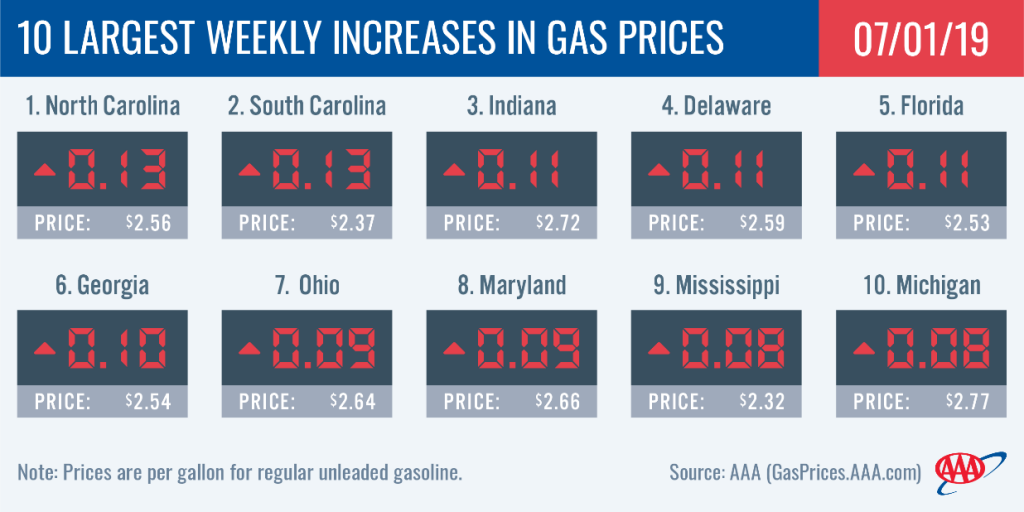Last Updated on July 2, 2019 10:01 am
CHARLOTTE, N.C. (July 1, 2019) – Following weeks of steady pump price declines, gas prices are starting to increase across the Carolinas – with North and South Carolina having the largest weekly increases across the entire nation. North Carolina’s average of $2.56 is 13 cents higher than last week, but two cents less than a month ago and nine cents less than this time last year. South Carolina’s $2.37 average is 13 cents higher on the week, but eight cents less than a month ago and 15 cents less than this time last year.

“The estimated 1.8 million Carolinians hitting the road for Independence Day this year will find gas prices cheaper than Memorial Day weekend and last year’s Independence Day, but more expensive than they’ve been paying in the last few weeks,” said Tiffany Wright, AAA Carolinas spokesperson. “It’s typical to see an increase ahead of the holiday, but we may see prices continue to jump throughout the month due to a few moving parts.”
Factors driving up gas prices:
- Crude oil prices: West Texas Intermediate (WTI) was priced as low as $51.13 in mid-June, but has since jumped more than $8 to land as high as $59.43. Crude accounts for as much as 60% of the retail gasoline price.
- Supply: The Energy Information Administration (EIA) reports total U.S. stocks at 232 million bbl for the week ending June 21, which is the lowest June stock level seen since 2015.
- Demand: Demand remains robust for peak summer driving season at a four-week average of 9.6 million b/d. EIA reports gasoline stocks drew down for a second week in its latest report. This trend isn’t likely to stop this week, especially with 41.4 million Americans expected to hit the road for the Independence Day holiday.
- Philadelphia Energy Solutions (PES): Last week, PES announced that they will permanently close the South Philadelphia refinery this month, which is the oldest and largest refinery on the East Coast. The announcement came following a June fire and explosion at the refinery, which produces 335,000 barrels of crude per day (42 U.S. gallons per barrel). While gasoline stocks from Canada, neighboring refineries, and the Colonial Pipeline will help backfill supply, retailers will likely face increased transportation costs which will drive up prices in the Northeast and surrounding regions.
- Organization of the Petroleum Exporting Countries (OPEC): OPEC and its partners will meet today and tomorrow in Vienna and are likely to extend the current production reduction agreement of 1.2 million b/d through the end of the year, which could push crude oil prices more expensive.
Below are the averages by region:

For our release on Independence Day travel numbers, click here.



















